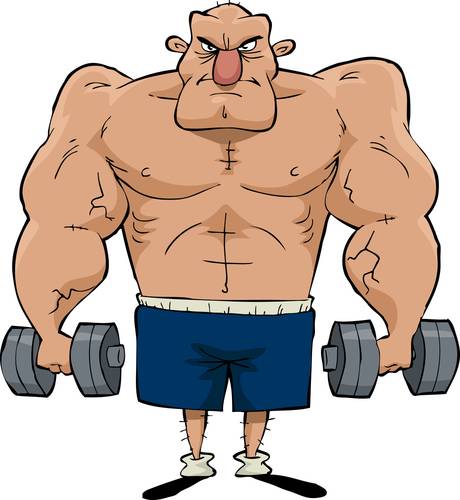You might have heard this before. “You can’t shoot a cannon out of a canoe.”
What does that mean? Pretty simple. Place a cannon (or other projectile device) in a canoe (or other lightweight water vessel) in a body of water. Shoot it and see what happens. BOOM. Because the water provided a poor base of support to maximally launch the projectile, only minimal distance will be achieved. Hence, you can’t shoot a cannon out of a canoe.
Now, place the cannon on land and let it rip. Greater distance will be obtained due to a more stable launching support. It’s simple physics and the cannon-canoe example has implications for most athletics events. Possessing a weak base results in less than optimal performance results.
A Lesson From Isaac Newton
 Isaac Newton’s third law of motion states, “For every action, there is an equal and opposite reaction.” With that in mind, we can further analyze the cannon-canoe situation. Shoot a cannon out of a canoe and it will be a dud because the force of the cannon shot (the action) will not be countered by the weak opposing force of the canoe and water (opposite reaction.) Launching a cannon shot from solid ground will create a better result due to the greater opposing force supplied by the stable ground.
Isaac Newton’s third law of motion states, “For every action, there is an equal and opposite reaction.” With that in mind, we can further analyze the cannon-canoe situation. Shoot a cannon out of a canoe and it will be a dud because the force of the cannon shot (the action) will not be countered by the weak opposing force of the canoe and water (opposite reaction.) Launching a cannon shot from solid ground will create a better result due to the greater opposing force supplied by the stable ground.
Here’s what you most likely know by now. A stronger base of support (launching pad) improves your potential to exhibit a better end result (opposite reaction). So the message for you athletes is to improve the strength of your lower body to optimize your launching ability regardless of your sport or event.
Sports and Actions Improved With a Better Launch Pad
Here is a list of sports and activities, along with the specific actions that can be improved with a stronger lower body. (So many examples!)
- American football – Planting and cutting, tackling, passing, punting, kicking
- Baseball – Hitting, pitching, throwing, base running
- Basketball – Jumping, shooting, planting and cutting, rebounding
- Bowling – Applying force to the bowling ball upon release
- Boxing – Putting force behind the punches
- Cycling – Applying force to the down stroke
- Discus throwing – Applying force to the ground at release
- Field hockey – Applying force with the stick to the ball
- Golf – Driving for maximum distance
- Gymnastics – Applying force to the vault, balance beam, or the floor
- High jumping – Applying force to the ground on takeoff
- Ice hockey – Applying force to the puck or applying force to an opponent
- Long jumping – Applying force at the takeoff board
- Mountaineering – Climbing and maneuvering with the legs
- Rowing – Performing repetitive pushes with the legs
- Shot putting – Applying force to the ground at release
- Softball – Hitting, pitching, throwing, base running
- Sprinting – Applying force against the starting blocks and the ground during strides
- Swimming – Driving off the side of the pool
- Tennis – Applying force in a serve or in any return, single or double arm
- Volleyball – Applying force in a serve or a jump
- Weightlifting – Applying force to the platform to raise the resistance from the ground to the chest (clean) or overhead (snatch), as well as applying force to move the resistance overhead (jerk)
- Wrestling – Applying force during a takedown
Remember, legs are a man’s (and woman’s) best friends when getting from point A to point B. To optimally shoot a cannon out of a canoe, strengthen your lower body.
Illustrations courtesy of Shutterstock.






